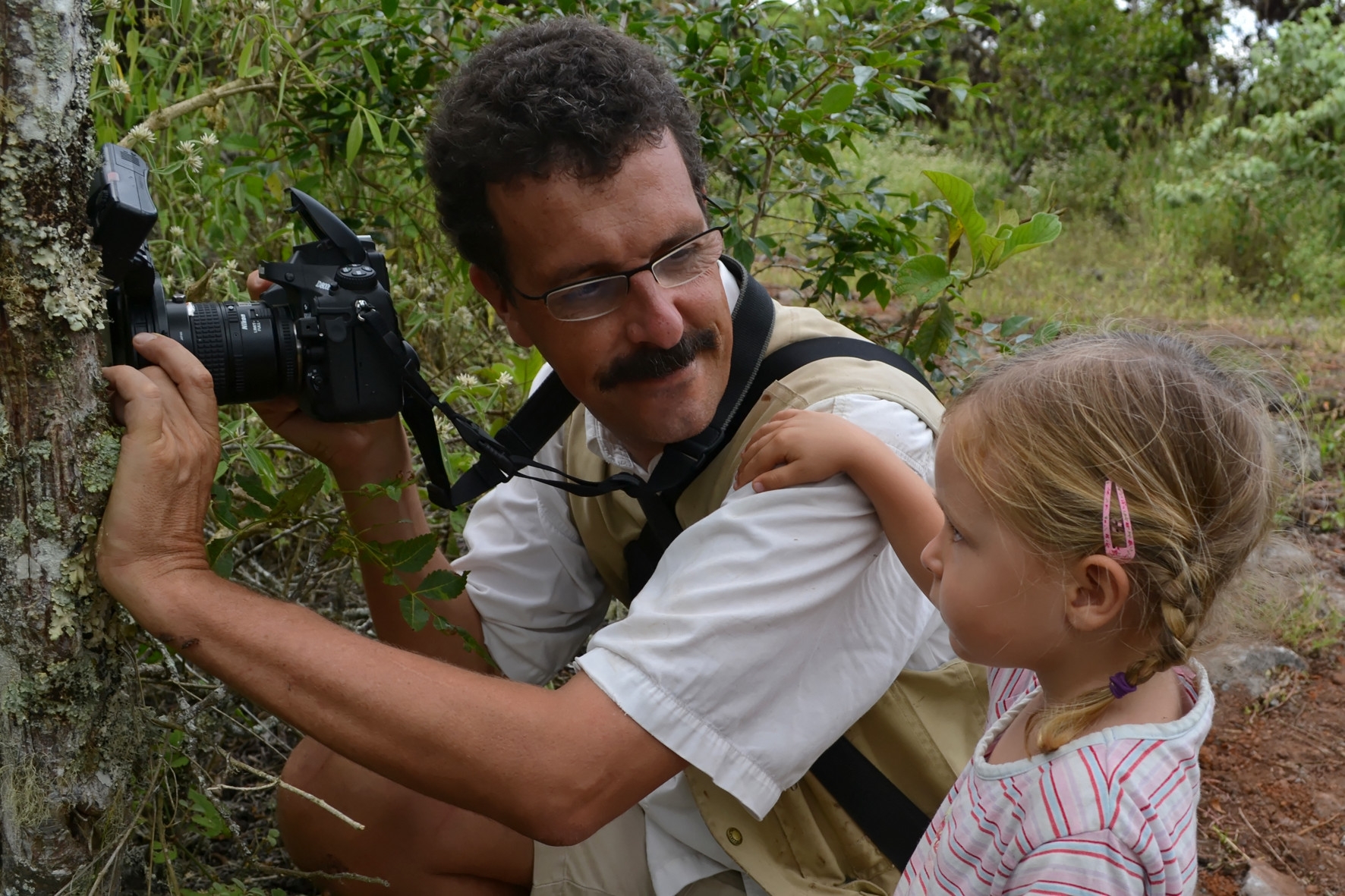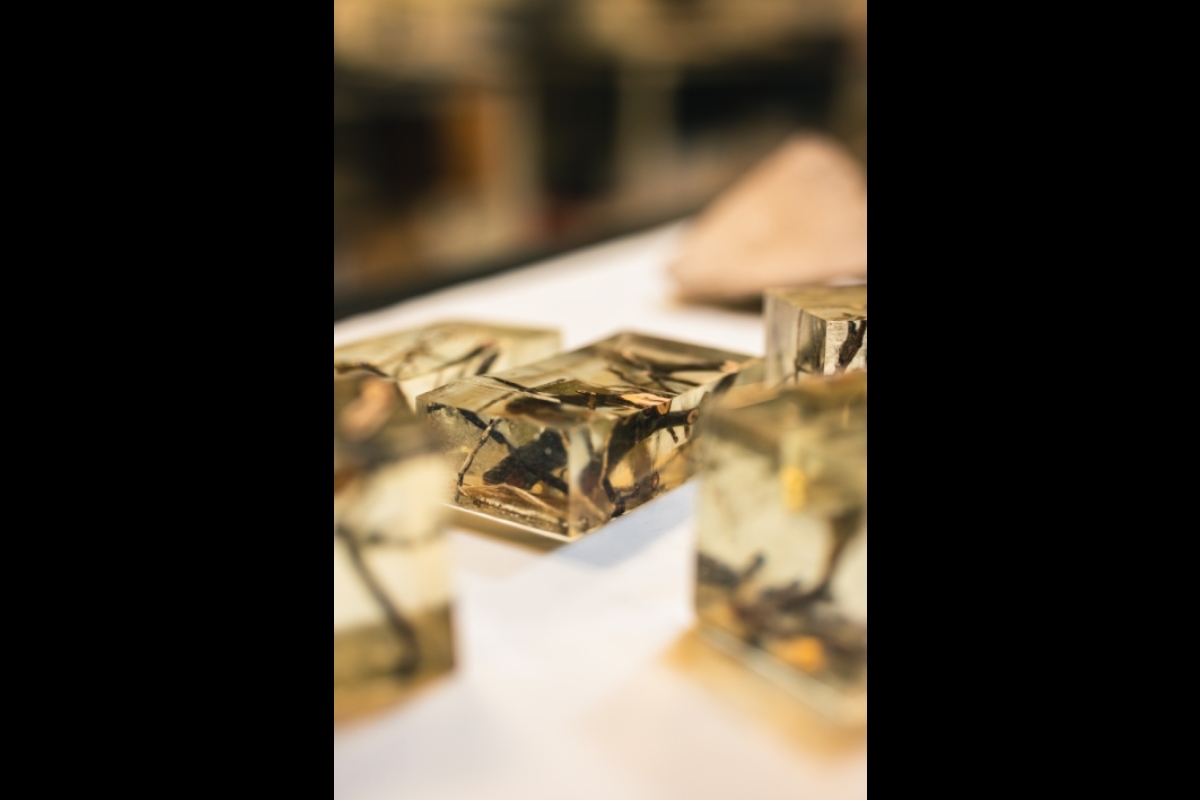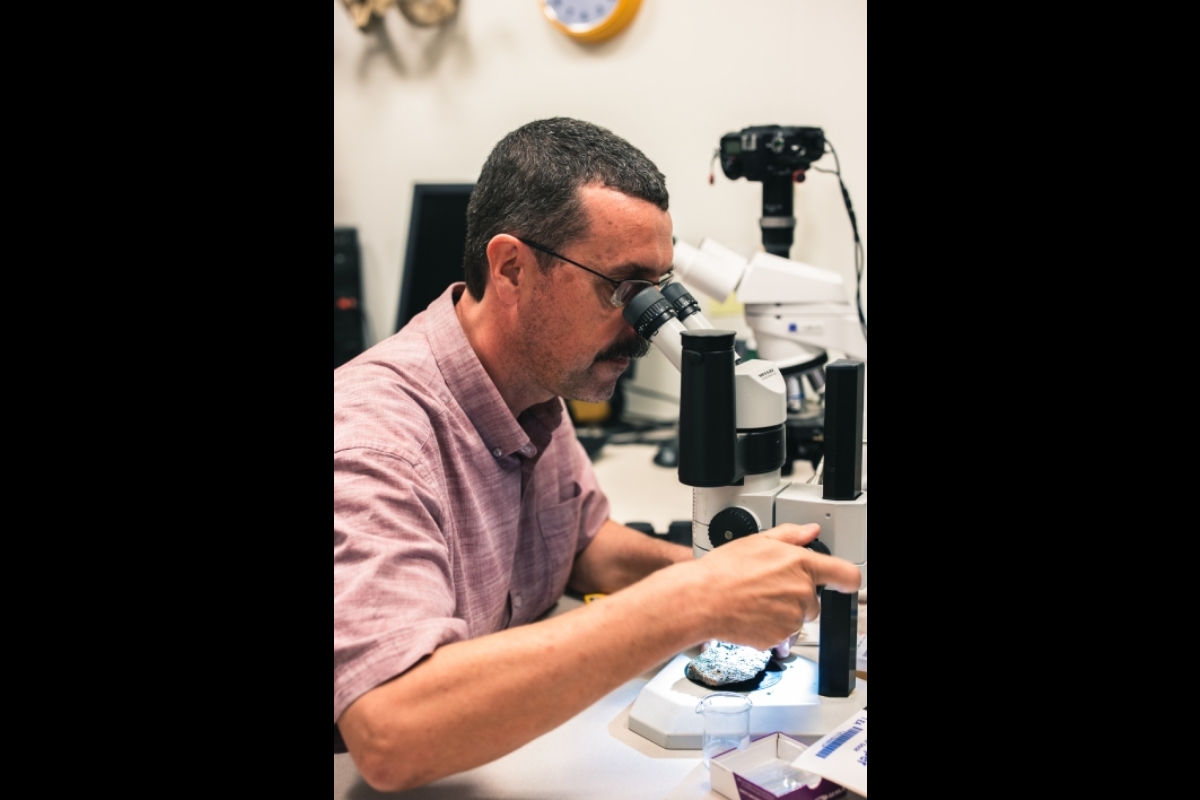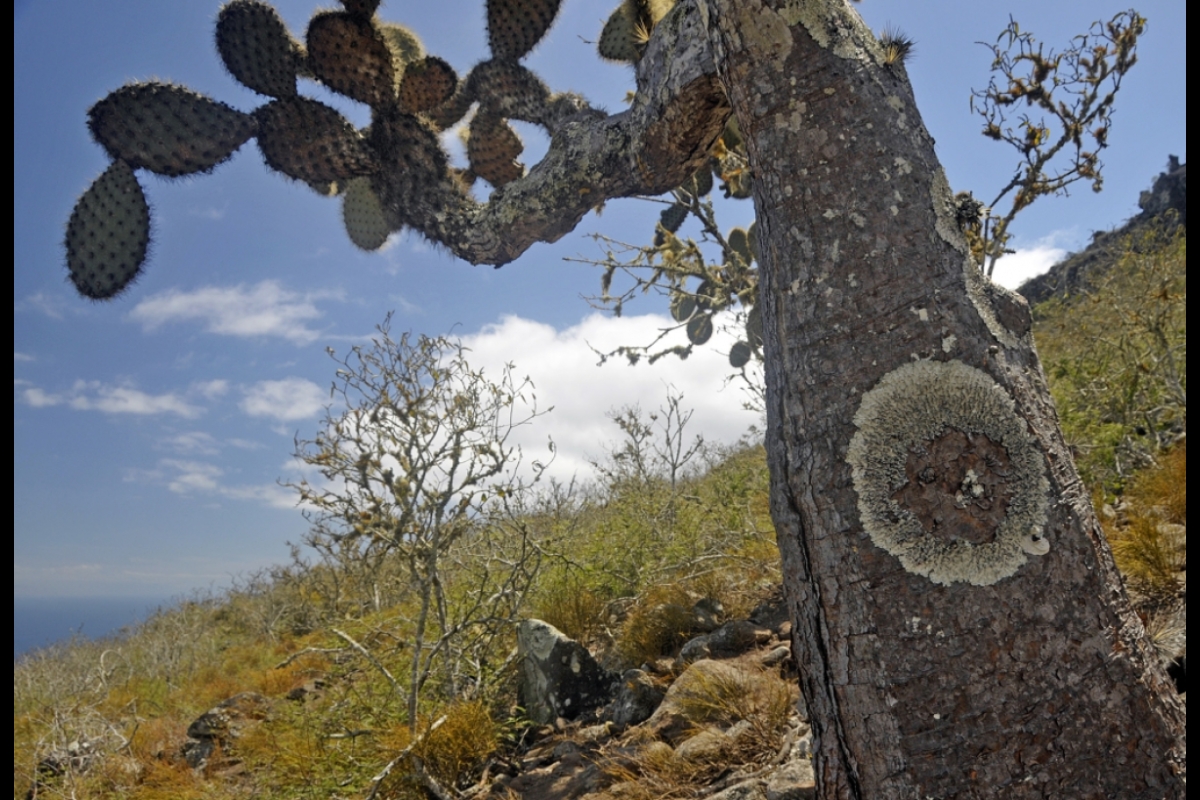A couple miles away from Arizona State University’s Tempe campus is a building filled with fascinating sights ranging from stuffed javelinas to ancient fossils and rocks.
Amid all these eye-catching items is a collection of less-conspicuous organisms often so tiny, you’d miss them if you were out in the wild: lichens.
Lichens are composite organisms made up of a fungus and a photosynthetic partner, living together in a mutually beneficial relationship. They’re often found on rocks, on trees, even on tortoise shells, in colors ranging from black, brown, deep-orange red or yellowish-green to a bright neon yellow. And while their existence may not be common knowledge to most, they play a very important role in the environment.
Their importance in our ecosystem is one of the reasons Frank Bungartz, the collections manager of lichens and digital data at Arizona State University's School of Life Sciences in The College of Liberal Arts and Sciences, became so passionate about these organisms.
“We really should care about lichen,” Bungartz said. “When they disintegrate stone, they start forming soil. And soil is something really essential, I mean, all plants live on soil and we all eat plants. Essentially, without lichens, there could still be bare rock almost everywhere. And nothing would grow.”
Lichens also lend themselves to air pollution monitoring and studies because they obtain all their nutrients directly from the air rather than through their roots, Bungartz said. While working in Europe, he would receive phone calls from homeowners concerned about “stuff” growing on their trees. That “stuff” was lichens, which were coming back to the inner cities after a period of extinction during the industrial revolution.
“And I said, ‘Well, be happy that you have this stuff growing on your trees because it means that you can breathe your air again as lichens are actually a good indicator that things have improved,’” he explained.
Today, Bungartz manages the fifth-largest lichen collection in the country as part of ASU’s Natural History Collections.
The collections facility houses nine collections in four different units: the Vascular Plant Herbarium, Zoological Collections, Fossil Plants Collection and Lichen Herbarium. The Lichen Herbarium is home to more than 128,000 fully accessioned and databased lichen specimens from all over the world and boasts a collection most representative of the Southwest.
From lichen to fascination
“Looking at these organisms, they are so beautiful, they could be a Georgia O’Keeffe painting,” Bungartz said. “I became so intrigued by what these things look like. When you examine them at a microscopic scale, they’re incredibly beautiful.”
Bungartz’s appreciation began long before he came to ASU, back when he was an undergraduate student studying at the University of East Anglia in the United Kingdom.
In his third year, he had to complete a bachelor’s thesis — but Bungartz didn’t want to do his in a lab.
While bicycling through the countryside one day, he came across a graveyard with tombstones covered with lichens.
At the time, Bungartz said the only thing he knew about lichens was that they were a good indicator of air pollution.
“I came up with this idea to look at lichen communities on tombstones and see whether there was a difference between the countryside churchyards and inner-city churchyards,” Bungartz said. “I had no idea what I was getting into at the time.”
Researching and educating about the importance of lichen
After completing his bachelor’s and master’s degrees in Europe, Bungatz came to ASU in 1999 as a PhD student to study under the now-Emeritus Professor Thomas Nash, in what is today known as the School of Life Sciences. Nash was the creator of the Lichen Herbarium.
Nash, his wife, Corinna Gries, and then herbarium curator Bruce Ryan invited Bungartz, at the time still a graduate student, to help edit the “Lichen Flora of the Greater Sonoran Desert Region,” written by 90 contributing authors worldwide.
This lichen "Flora” represents today the most comprehensive biodiversity inventory of almost 2,000 desert lichens reported from the Sonoran Region, almost 40% of all lichens known from North America, a gigantic, 30-year endeavor which culminated in the publications of three authoritative volumes of research, Bungartz said.
Aside from publishing his findings, Bungartz also serves as a resource to those concerned and curious about lichens from around the world.
“We know that many lichens inhabiting rocks can sit on these surfaces for ages, some even centuries,” Bungartz said. “Recently, people in Peru contacted me because they’re really worried how lichens might affect stonework and how they might deteriorate their national monuments. The most famous is Machu Picchu, for example.”
Bungartz said he gave a presentation to officials in Peru on how best to monitor the effect of lichens on stone over time, using a long-term series of photographs to document how lichen communities on the monuments changed.
“To an archaeologist, he or she looks at these stone walls and says, ‘Oh, this is horrible, this is really dirty,’” he said, “But actually, removing (the lichens) might not be the best solution.”
Instead, Bungartz argued that removing them from the rock could actually accelerate the process of erosion.
“And Machu Picchu is full of lichens that are virtually unknown,” he said. “It’s kind of an ideal habitat that could protect the biodiversity of these organisms. You’d want to protect the cultural heritage of these sites, but also the living heritage, the biodiversity of this planet.”
Prior to returning to ASU three years ago, Bungartz had worked and lived almost 10 years on the Galapagos Islands. There he did research similar to his work in the Sonoran region. He documented several hundred species previously unknown from the archipelago, and described 50 species of lichens new to science. He is still collaborating with researchers worldwide to catalog the tremendous diversity of lichens on these islands and he plans to eventually publish a comprehensive identification guide of Galapagos lichens.

Bungartz inspects lichen with his daughter Lea.
Researchers who discover new species can choose how to name them. From the Galapagos, Bungartz recently described Usnea leana, named for his 8-year-old daughter Lea. In the Sonoran region Bungartz also left his mark: As part of his doctoral dissertation he named a new desert lichen Buellia regineae — after his sister Regine.
As his research continues, he said it’s important to think of lichens not as individual organisms, but as one piece in a larger, interconnected web.
“Lichens are a part of complex ecosystems,” Bungartz said. “By taking little pieces in or out of this ecological web, we’re endangering the entire web. That’s why lichens are so important.”
More Science and technology

Miss Arizona, computer science major wants to inspire children to combine code and creativity
Editor’s note: This story is part of a series of profiles of notable spring 2024 graduates. “It’s bittersweet.” That’s how Tiffany Ticlo describes reaching this milestone. In May, she will graduate…

ASU applied behavior analysis program recognized in Four Corners region
Helping students with learning disabilities succeed in school and modeling effective communication skills are just two examples of how applied behavioral analysis improves lives. Since launching…

Redefining engineering education at West Valley campus
Editor's note: This story originally appeared in the summer 2024 issue of ASU Thrive magazine. What makes the School of Integrated Engineering different from other engineering schools? We listened…



